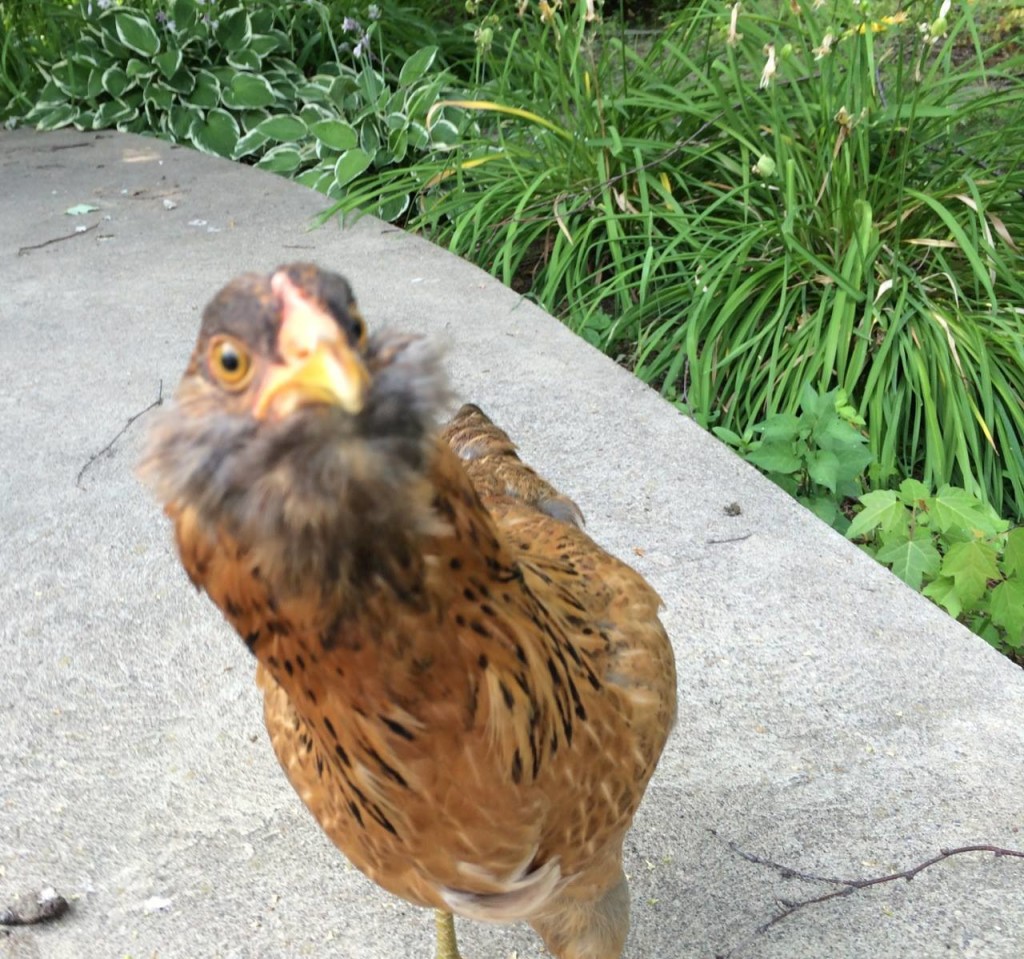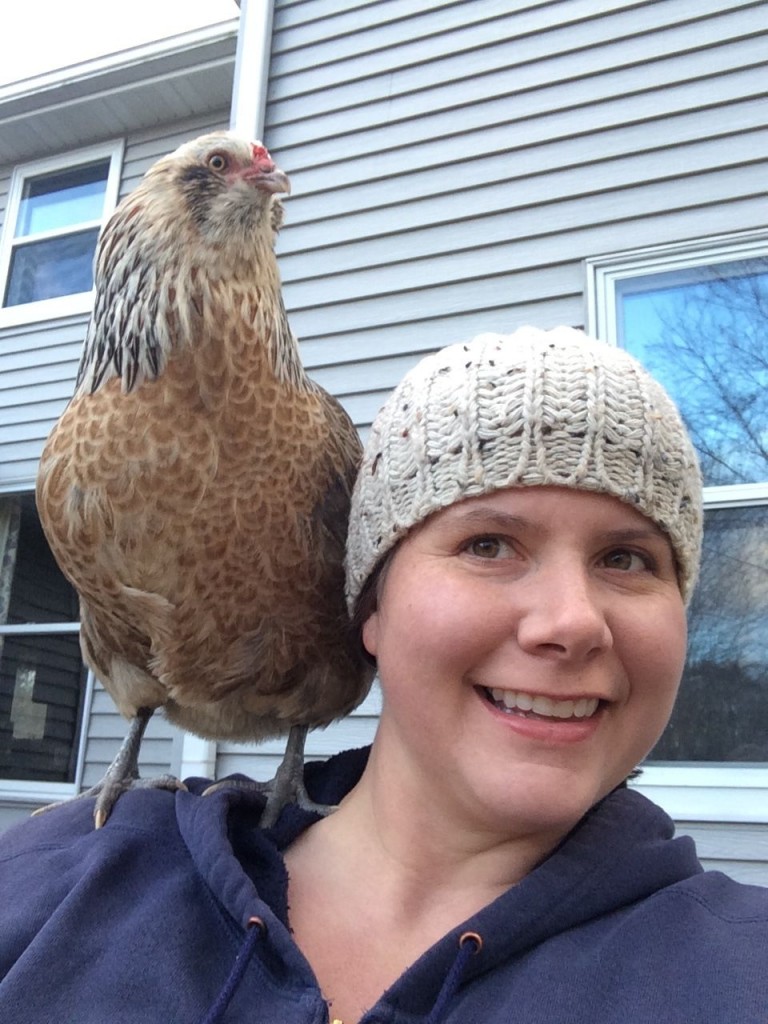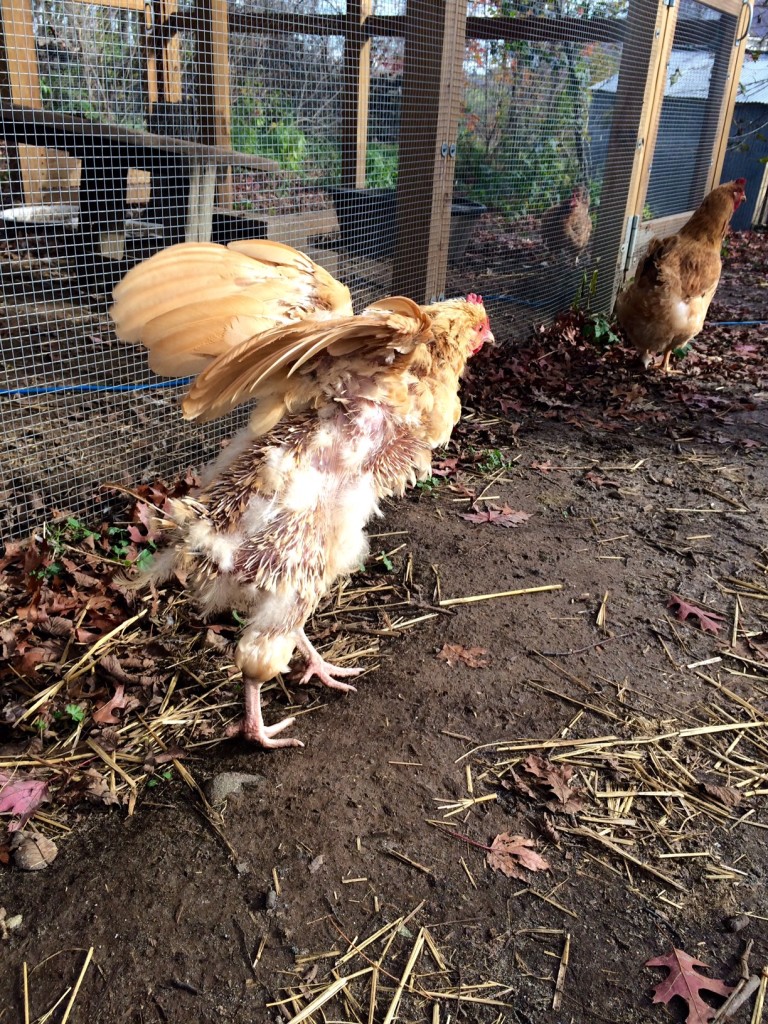Feather Pecking amongst Chickens

Last week I was working in my chicken run and took out their
toys to clean and fill in some holes. A few days later I came home to my
beautiful Cuckoo Maran all bloody and pecked up. I quickly treated her and put
their toys back in and added a few others. Within a few days everything was
back to normal and no more pecking. It can be something as simple as moving
things around or adding items that chickens like to play with. I used some old
flower pots on a bamboo stick, blocks of wood or hang a ball in the run. It
doesn't take much but with a little imagination you can give them something to
keep them from turning on each other.
When I talk to customers about chickens, I use the example of kids on a
playground, "Some days they all play nice together and next thing you know they are
duking it out." I learned my lesson! Anice
To some people chickens are just those brown feathered things that lay the eggs you keep in the fridge. To others (the special, initiated, fans of chickens) they are a constant source of enjoyment and as much a member of the family as any other pet.
However, whatever your view on chickens, they have become embedded in the very lexicon of our language. If you are in a small space you feel "cooped up". Perhaps your "chickens will be coming home to roost" because you have "chickened out" and are now "running around like a headless chicken".
Possibly the most pervading though has to be "the pecking order", from the Houses of Parliament to Poultry Houses there are pecking orders, however, only in the latter case does any literal pecking occur (well ... ...)
Identifying Feather PeckingChickens will always peck at each other a little bit, this is almost an essential part of establishing a "pecking order" or hierarchy amongst the flock. So the 'top hen' will peck at others and the lowest bird in the order will be pecked most.Most of the time this isn't a real problem and you'll probably find that the bird at the bottom of the social order will merely high tail it away if it gets fed up and no real damage is done. However, if your hens are kept in an enclosed run, simply running away might not be an option. Feather pecking is, as the name suggests, when one hen starts pecking at another's feathers and pulls them out causing distress to the birds and, in some cases, draws blood from a wound. This is not to be confused with an over-amorous cockerel who can often pull feathers out of a hens back while trying to gain a perch, or even the annual moult. Feather pecking often occurs around the hen's vent, tail or head. A good indication that feather pecking is occurring is not only bald patches on the birds but the sign of half eaten feathers around the coop. Chickens are attracted to the colour red (one reason why so many poultry feeders and drinkers are red) so the comb, wattle and the vent - which is often reddened after laying an egg - draws the attention of other hens. Chickens are also attracted to blood, the colour and smell (they are after all essentially mini dinosaurs) so, if wounds are left untreated, it will only attract them more. Always make sure you treat any blood or wounds straight away with either a gentian violet spray or a wound powder, for the well-being of the bird. |
Boredom This is number one on the list. If your hens have to be kept in an enclosed space (for their safety and your sanity) then perhaps this is the easiest to solve. Convention says that a hen needs 3 sq. ft. of outdoor space when permanently enclosed in a run. You might find giving your birds that little extra bit of space, if possible, will solve the problem. Equally, like all living things, chickens like to feel the sun on their backs (but they will still need shade options too). If you have them tucked away in a dark and dingy corner of the garden, can you move them so that they can enjoy more daylight? If neither of these are an option for you, giving the birds something to occupy themselves is one way to cure boredom. Hanging Boredom Buster Chicken Treats or perhaps a few fresh greens hung around the run will help keep your hens distracted and busy. Do your hens have a nice friable surface to scratch around in during the day to look for bugs and worms e.g. woodchip? Can you give them some perches in their run perhaps, or branches to stand on? |
Stress Stress is also one of the top reasons for feather pecking. A chicken coop that is too hot will stress the birds, try to increase the ventilation to cure this problem. If you have too many hens in one hen house or poultry run, the lack of space will stress them. Can you reduce the overcrowding? As a guide a hen should be allowed 1 to 2 sq ft in their house with 7"-8" of perch space to roost. When laying an egg especially, chickens like the area to be dim and quiet, excessive or glaring lights will only stress them and reduce egg laying. A chicken coop should have at least one nest space per 4 to 5 birds. Anti-Feather Pecking Sprays can help to break a feather pecking habit such as this. The spray is applied to the victim bird, it creates a foul taste in the perpetrators mouth, helping to deter them from pecking. Some pecking sprays are clear liquids and contain antiseptics, whilst others are brown and based on Stockholm Tar which is an old traditional method to stop pecking or biting. You may find one type will work with your flock whilst another may not so you may need some trial and error to find the right one. |
The Annual Moult For laying hens the moult is a yearly process, usually around the end of summer and the start of autumn, in which a chicken replaces its feathers over a period of approx. a month. The moult can begin, surprisingly, as late as early winter in some birds. They will look really bedraggled and 'under the weather' during this time, and therefore enticing to other hens, who will peck at the newly emerging quills and the area of reddened skin. This can quickly escalate to cannibalism so should be dealt with straight away. Gentian Violet Spray will work as both an antiseptic and colour the affected area purple. As chickens are attracted to the red skin of a pecked bird, turning the skin purple is an easy solution to helping the poor bird. An anti-feather pecking spray would help in this instance also, making the newly emerging feathers taste bad to the pecking hens. To help them through the yearly moult you might try the traditional method of putting some cod liver oil in their feed, at a rate of around a tea spoon per Kg of feed. Rich in vitamins A and D it helps with the general conditioning of your bird, especially useful around the moult. Other tips are to give them high protein treats that will encourage speedy growth of feathers. A good quality Poultry Tonic or Verm-X Poultry Zest Pellets would also be advisable at this time so their body can recover quickly. |
Lack of ProteinA lack of protein in the diet is a rarer reason for feather pecking, but it is a consideration if you see your birds pulling out and eating the feathers but don't feel that this is in an aggressive manner.Feathers are made of protein, so if a bird is suffering a protein deficiency they can turn to feather pecking and eating the feathers as a source for much needed protein. Making sure that your hens have a good, balanced diet, in particular a quality layers pellet as their staple feed, will help keep this to a minimum. Their Layers Pellets should contain around 16% protein, this will be on the label e.g. the Smallholder Layers Pellets range, or, Garvo Alfamix for Chickens. Until the recent introduction of an EU law which said that we can no long sell (market) mealworms as being 'for chickens', dried mealworms would have been suggested as a good source of protein of course, as they are a high protein food, but they are now only available in our wild bird feed section, Dried Mealworms for Birds. |
Persistent Peckers!!If you have a persistent pecking problem and none of the above solve the problem, then the answer might be segregation or isolation, for either the bird who is doing the pecking or perhaps the bird who is being pecked, to give her time to recover and grow new feathers safely.When a bird is segregated it should still be located near to the other hens, where it can be seen by the remaining flock. This is an important point. While hens can still see each other, they remain part of the same flock, even if separated. If you completely remove the hen and then try to re-introduce it, you might find feather pecking starts all over again as they bully the 'new' member of the flock. Equally, if you're separating the culprit from the flock, leave them apart from the others for around four days or so, at which point they will have hopefully forgotten their aggressive behaviour. |








